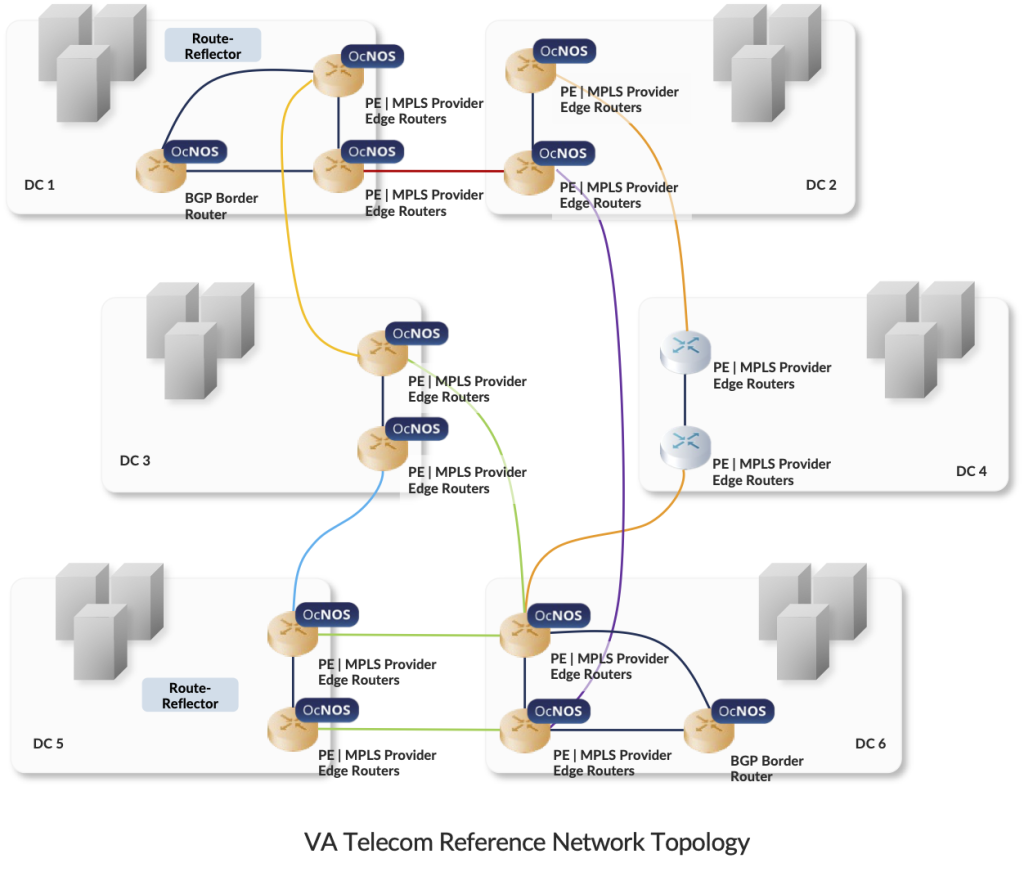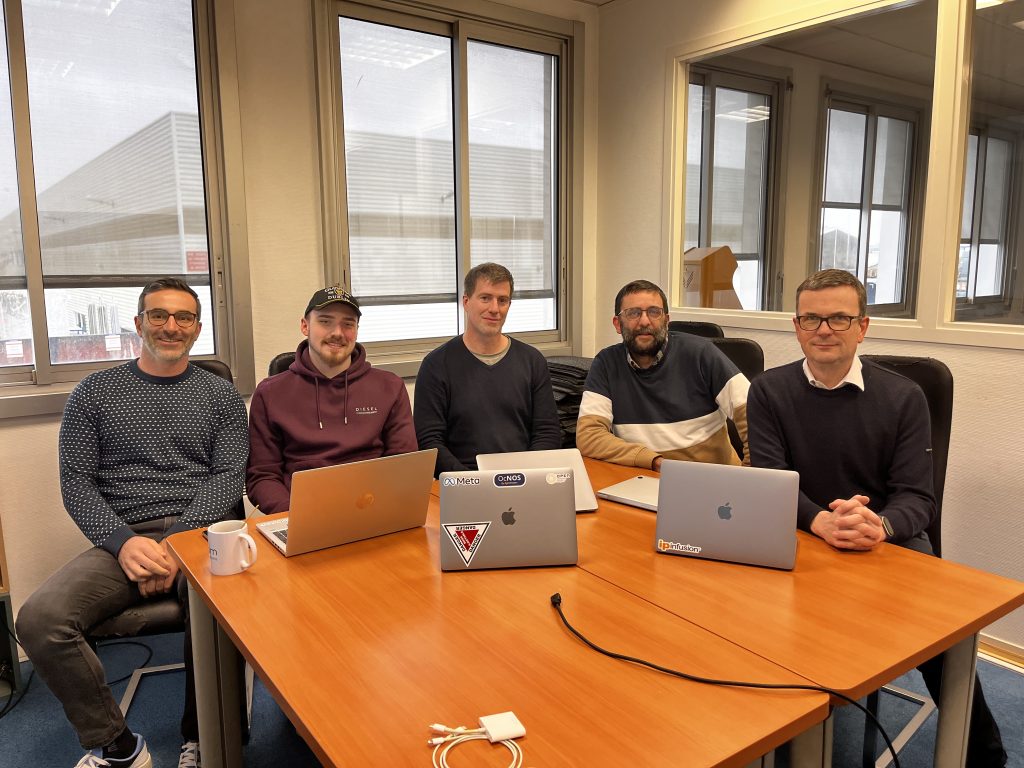VA Telcom’s journey to 400G-ready backbone with OcNOS and Pine Networks
Executive Brief
VA Telecom, a leading French telecommunications operator dedicated to serving business customers, proactively modernized its backbone to meet evolving enterprise demands with enhanced network capacity, resilience through cutting-edge routing capabilities, and optimized efficiency to support next-generation services.
After assessing options from Nokia, Juniper, and IP Infusion, VA Telecom chose IP Infusion’s OcNOS® on UfiSpace hardware, backed by systems integrator Pine Networks. The open networking strategy offered advanced MPLS and BGP services, enhanced network stability, and cut total cost of ownership (TCO).

With six interconnected data centers across Nantes, Paris, and Metz, VA Telecom delivers:
- Internet access
- Fixed and mobile telephony
- Professional Wi-Fi for hospitality
- MPLS VPN for private site interconnection
Embracing open networking solutions enhanced backbone capacity, upgrading speeds from 10G to 100G with a 400G-ready solution. This change consolidated hardware and prepared the network for future innovations in enterprise connectivity.
Challenges
In their latest effort, VA Telecom was looking to scale their current network infrastructure based on Mikrotik routers, which served them reliably for years. The challenges they faced included:
- Scaling for Growth: The existing network, while reliable, needed greater capacity to handle advanced functions like BGP, full routing/MPLS, and VRF concurrently to support expanding enterprise requirements.
- Adopting Advanced Services: Integrating next-generation features like Segment Routing (SR-MPLS) and EVPN was essential to enhance service quality and network scale.
- Economic Sustainability: VA Telecom sought a solution that offered long-term financial predictability, moving away from the costly licensing and shorter support lifecycles of traditional vendors.
- Vendor Lock-In Risk: Reliance on a single vendor created risks. The company wanted the flexibility to choose best-in-class hardware and software
Deployment
- Phase 1: MPLS Provider Edge Routers. OcNOS SP (for Service Providers) on UfiSpace 25/100/400G Open Routers was deployed for advanced MPLS PE functions, supporting LDP, VPLS, L3VPN, SR-MPLS, and future EVPN, facilitating secure enterprise interconnections.
- Phase 2: BGP Border Routers. Legacy MikroTik CCR routers were replaced with OcNOS SP on UfiSpace 25/100G Open Routers, enabling carrier-grade BGP peering with multiple upstream transit providers and full IPv4/IPv6 routing.
Architecture
The topology below showcases VA Telecom’s new resilient and scalable backbone. The architecture uses OcNOS devices for customer-facing Provider Edge (PE) and internet-facing BGP Border Router roles, which interoperate seamlessly with the existing core (P) routers.
The design ensures high availability with redundant paths. IGP selects the most efficient route for traffic, while Fast Reroute (FRR) provides near-instant failover in case of a link failure. Network scalability is managed using Route Reflectors (RR), which simplify the BGP design and allow for easy expansion.
Solution Highlights
Better Service: By deploying OcNOS, VA Telecom can now run multiple complex functions on a single device without the performance limitations of their previous solution, leading to a more stable and reliable network.
Localized Support: Pine Networks provided expert integration, deployment, and ongoing assistance tailored to the French market.
Future-Ready Architecture: The solution provides a direct and proven path to adopting next-generation technologies. VA Telecom can now implement Segment Routing and plans to introduce EVPN to replace VPLS, ensuring their network can deliver advanced, scalable services.
Operation Flexibility: The open networking model provides complete vendor independence. Standard routing protocols ensured seamless interoperability with the legacy Mikrotik backbone, allowing for a smooth, phased migration with minimal service disruption.
Superior ROI & TCO: The combination of OcNOS perpetual licensing, long-term software support (72+ months per release), and the freedom to choose hardware delivers the most cost-effective solution over a 10-year horizon.

Summary
VA Telecom’s strategic migration to a disaggregated open network has successfully transformed its core infrastructure. The new backbone delivers the stability and performance needed to consolidate multiple network functions, simplifying operations and reducing hardware footprint.
By choosing IP Infusion, VA Telecom has built a future-proof backbone capable of delivering advanced services like Segment Routing and EVPN, giving them a distinct competitive advantage. Additionally, the solution provides superior long-term TCO and frees them from vendor lock-in, empowering VA Telecom with the agility to adapt and grow in the dynamic B2B telecommunications market. Key outcomes include:
Superior Performance: 400G-ready architecture with advanced MPLS and BGP services.
Vendor Independence: No vendor lock-in, ensuring future flexibility and competitive sourcing
Reduced Long-Term Costs: Lowered TCO through a perpetual software license model and the use of whitebox hardware.
“VA Telecom’s successful deployment of OcNOS demonstrates the power of open networking to deliver scalable, cost-effective, and high-performance solutions. We are proud to partner with IP Infusion and Pine Networks to drive innovation and efficiency in the telecommunications sector.” – said Jérôme Richard, CTO, VA Telecom.
“We worked closely with VA Telecom to deploy IP Infusion’s OcNOS, ensuring a smooth transition from their legacy systems. Our local support made the integration straightforward and reliable. This partnership delivers a solid, scalable network for VA Telecom’s customers.” – said Hadi Choueiry, General Manager, Pine Networks.

